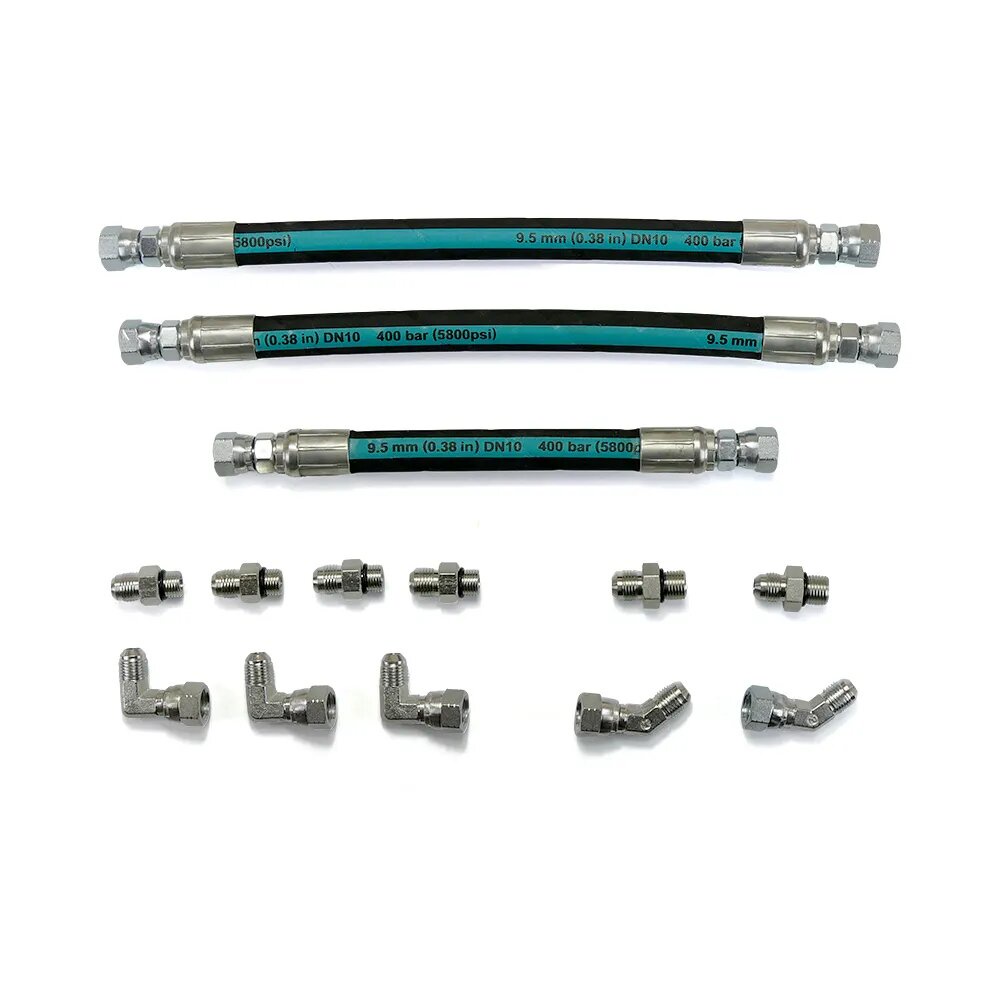The 7.3 Power Stroke engine, with its legendary durability and power, has been a favorite among diesel enthusiasts for decades. However, even this robust engine can experience issues, and one of the critical components often at the center of problems is the 7.3 high-pressure oil pump (HPOP). In this article, we'll explore common issues that can plague the 7.3 HPOP and discuss how it relates to 7.3 injector cups. Moreover, we'll provide insights into solving these issues effectively, helping you keep your Power Stroke running strong.
Understanding the 7.3 High-Pressure Oil Pump (HPOP)
Before delving into the common issues and solutions, it's essential to understand the vital role the 7.3 HPOP plays in the Power Stroke engine's operation. This component is responsible for generating high-pressure oil, which, in turn, powers the fuel injection system. Here's how it operates:
-
Oil Supply: The HPOP draws oil from the engine's oil pan, typically using 15W40 motor oil.
-
Pressurization: Inside the HPOP, a plunger and cylinder arrangement pressurize the oil, creating the high-pressure necessary for the fuel injection system.
-
Fuel Injection: The pressurized oil is delivered to the fuel injectors. Within the injector, the high-pressure oil acts on various components, causing them to open and allowing fuel to be injected into the combustion chamber.
-
Timing and Precision: The HPOP ensures precise timing and control of the fuel injection process, optimizing combustion for power and efficiency.
Common Problems with the 7.3 HPOP
While the 7.3 HPOP is known for its durability, it can experience issues over time. Here are some of the common problems you may encounter:
-
Oil Leaks: Leaks can occur at various points within the HPOP system, resulting in a drop in oil pressure and performance issues.
-
Worn Seals: Seals within the HPOP can deteriorate due to heat and pressure, leading to a decrease in oil pressure and potential engine problems.
-
Performance Degradation: A failing HPOP can lead to a noticeable reduction in engine performance. Symptoms may include rough idling, loss of power, or increased exhaust smoke.
-
No-Start Condition: In severe cases, HPOP failure can result in a no-start condition, as the engine may fail to generate sufficient oil pressure to actuate the fuel injectors.
Diagnosing HPOP Problems
Properly diagnosing HPOP issues is crucial for effective solutions. Here are steps you can take to diagnose problems accurately:
-
Check for Leaks: Examine the HPOP and its associated components for oil leaks. Common leak points include the HPOP reservoir, fittings, and hoses. Replace any damaged or worn parts.
-
Oil Pressure Test: Conduct an oil pressure test to measure the HPOP's output. You can use a mechanical gauge connected to the HPOP reservoir to check the pressure. Refer to your vehicle's service manual for the specified pressure range.
-
Listen for Unusual Noises: Pay close attention to any unusual noises, such as knocking or clicking, while the engine is running. These sounds could indicate problems with the HPOP.
-
Scan for Diagnostic Trouble Codes (DTCs): Use a scan tool to check for DTCs related to the HPOP or fuel system. Modern vehicles are equipped with onboard diagnostics that can provide valuable information about potential issues.
The Connection Between 7.3 Injector Cups and the HPOP
7.3 injector cups play a crucial role in the fuel injection process, and they are closely related to the HPOP. Injector cups are seated in the cylinder head and serve as a seal for the fuel injectors. When injector cups develop cracks or leaks, they can affect the overall performance of the HPOP by leading to fuel contamination and poor injector performance.
Solving HPOP Issues
Once you've identified problems with your 7.3 HPOP, it's essential to address them promptly to prevent further damage to your engine. Here are steps to solve common HPOP problems:
-
Seal Replacement: If you discover that seals within the HPOP are worn or damaged, they should be replaced. Ensure you use high-quality replacement seals and follow the manufacturer's installation instructions carefully.
-
Leak Repairs: If you find oil leaks, identify the source and repair or replace the affected components, such as fittings or hoses.
-
Pressure Relief Valve Inspection: Sometimes, a stuck pressure relief valve can cause HPOP issues. Inspect and clean or replace the pressure relief valve as needed.
-
Professional Diagnosis: For severe or persistent problems, seek professional assistance from a qualified mechanic or technician experienced in diesel engines. They can provide expert guidance and solutions.
In conclusion, the 7.3 high-pressure oil pump is a critical component of the Power Stroke engine, and addressing issues with it is essential for maintaining engine performance. Regular inspection and maintenance can help prevent and resolve common HPOP problems effectively. Additionally, the condition of 7.3 injector cups should not be overlooked, as they can impact the efficiency of the HPOP and the overall engine performance. By staying proactive and addressing issues promptly, you can keep your 7.3 Power Stroke running smoothly and reliably for years to come.


No comments yet